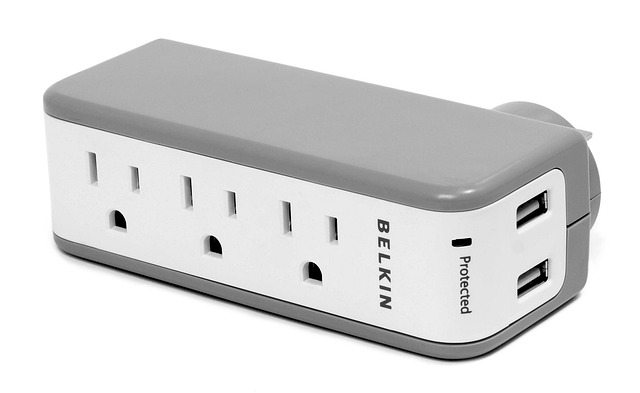Over 400 South Korean officials disclose $9.8M in crypto holdings
South Korea’s Ethics Commission revealed that high-ranking public officials in the country hold an average of 35.1 million won ($24,000) in crypto assets. On March 27, the country’s Ethics Commission for Government Officials reportedly disclosed that more than 20% of the surveyed public officials hold 14.4 billion won ($9.8 million) in crypto. This means 411 of the 2,047 officials subjected to the country’s disclosure requirements hold crypto assets. The highest amount disclosed was 1.76 billion won ($1.2 million) belonging to Seoul City Councilor Kim Hye-young. The officials held different crypto assets, including Bitcoin (BTC), Ether (ETH), XRP (XRP), Dogecoin (DOGE), Luna Classic (LUNC) and others. South Korean public officials disclosed crypto holdingsThe disclosure of public officials’ crypto assets follows calls for transparency from its prime minister. In 2023, South Korean Prime Minister Han Deok-soo said in a news conference that high-ranking government officials must include crypto in their property disclosures. The official said crypto should be treated similarly to other assets like precious metals.On May 25, 2023, South Korea passed a bill mandating public officials to include crypto in their public asset disclosures. The new system granted South Koreans access to the crypto holdings of at least 5,800 public officials starting in 2024. In June 2024, crypto exchanges in the country launched information provision systems to simplify the registration of information about crypto holdings. Related: South Korea temporarily lifts Upbit’s 3-month ban on serving new clientsLawmaker controversy spurred crypto disclosure lawsThe new law was created in response to the controversy involving South Korean lawmaker Kim Nam-kuk, who was accused of liquidating crypto assets and concealing holdings of around $4.5 million before lawmakers in the country enforced the Financial Action Task Force’s (FATF) “Travel Rule.”Kim departed from the Democratic Party at the height of the controversial lawsuit to relieve party members of the burden of the lawsuit. While prosecutors requested a six-month prison sentence for Kim, the lawmaker was eventually acquitted after a judge ruled that crypto assets were not subject to public disclosures at the time Kim made the transactions. Magazine: 3AC-related OX.FUN denies insolvency rumors, Bybit goes to war: Asia Express
Ghibli memecoins surge as internet flooded with Studio Ghibli-style AI images
Solana Ghibli-inspired memecoins are surging in popularity as ChatGPT users have flooded social media with Studio Ghibli-inspired images over the past 24 hours.On March 25, OpenAI launched image generation for its ChatGPT-4o mode, leading users to splash images across social media style in the art style of Studio Ghibli — known for its anime films Spirited Away and My Neighbor Totoro.OpenAI CEO Sam Altman and billionaire entrepreneur Elon Musk contributed to the trend, posting portraits of themselves generated by the model. Musk, with over 219 million followers on his platform X, has a history of influencing memecoins such as Shiba Inu (SHIB) and Dogecoin (DOGE) with his posts.Sam Altman posted a Studio Ghibli-inspired AI image while announcing ChatGPT’s image generation tool. Source: Sam AltmanNeither Musk nor Altman mentioned any Ghibli-themed memecoin. Still, the largest Ghibli-themed token by market cap, Ghiblification (GHIBLI) has reached a market cap of $20.80 million since it went live 19 hours ago, according to DEX Screener.At the time of publication, it is trading at $0.02083, up approximately 39,010% since it was created.The Solana-based memecoin Ghibli has climbed by nearly 40,000% since it launched on March 26. Source: DEX ScreenerAt least 20 other Ghibli-related memecoins have been created since. Some crypto traders see it as a potential sign of life for the memecoin market, which has dropped 57% in value since Dec. 8 — just days after Bitcoin first hit $100,000.Crypto trader Sachs said in a March 26 X post that he is praying the memecoin “runs to $100M to bring some hopes into these markets.”“Severely needed,” Sachs added.Related: The $100B memecoin market meets AI-driven intelligence for smarter tradingIt follows the recent trend of memecoins sparking out of cultural references and movements. The CHILLGUY token launched on Nov. 15 on the Solana blockchain, riding the wave of the viral “Just a chill guy” meme that gained popularity on social media.CHILLGUY’s value surged, reaching a peak market capitalization of $643 million by Nov. 27. However, investing in memecoins tied to daily trends comes with significant risk. CHILLGUY is down 95% from its November high, according to CoinMarketCap data.Magazine: Ex-Alameda hire on ‘pressure’ to not blow up Backpack exchange: Armani Ferrante, X Hall of FlameThis article does not contain investment advice or recommendations. Every investment and trading move involves risk, and readers should conduct their own research when making a decision.
Crypto urges Congress to change DOJ rule used against Tornado Cash devs
A coalition of crypto firms has urged Congress to press the Department of Justice to amend an “unprecedented and overly expansive” interpretation of laws that were used to charge the developers of the crypto mixer Tornado Cash.A March 26 letter signed by 34 crypto companies and advocate groups sent to the Senate Banking Committee, House Financial Services Committee and the House and Senate judiciary committees said the DOJ’s take on unlicensed money-transmitting business means “essentially every blockchain developer could be prosecuted as a criminal.”The letter — led by the DeFi Education Fund and signed by the likes of Kraken and Coinbase — added that the Justice Department’s interpretation “creates confusion and ambiguity” and “threatens the viability of U.S.-based software development in the digital asset industry.”The group said the DOJ debuted its position “in August 2023 via criminal indictment” — the same time it charged Tornado Cash developers Roman Storm and Roman Semenov with money laundering.Storm has been released on bail, has pleaded not guilty and wants the charges dropped. Semenov, a Russian national, is at large.Source: DeFi Education FundThe DOJ has filed similar charges against Samourai Wallet co-founders Keonne Rodriguez and William Lonergan Hill, who have both pleaded not guilty.The crypto group’s letter argued that two sections of the US Code define a “money transmitting business” — Title 31 section 5330, defining who must be licensed and Title 18 section 1960, which criminalizes operating unlicensed.It added that 2019 guidance from the Treasury’s Financial Crimes Enforcement Network (FinCEN) gave examples of what money-transmitting activities and said that “if a software developer never obtains possession or control over customer funds, that developer is not operating a ‘money transmitting business.’”The letter argued that the DOJ had taken a position that the definition of a money transmitting business under section 5330 “is not relevant to determining whether someone is operating an unlicensed ‘money transmitting business’ under Section 1960” despite the “intentional similarity” in both sections and FinCEN’s guidance.Related: Hester Peirce calls for SEC rulemaking to ‘bake in’ crypto regulation The group accused the DOJ of ignoring both FinCEN’s guidance and parts of the law to pursue its own interpretation of a money-transmitting business when it charged Storm and Semenov.They said the result had seen “two separate US government agencies with conflicting interpretations of ‘money transmission’ — an unclear, unfair position for law-abiding industry participants and innovators.”The letter said that if not addressed, the Justice Department’s interpretation would expose non-custodial software developers “within the reach of the U.S. to criminal liability.”“The resulting, and very rational, fear among developers would effectively end the development of these technologies in the United States.”In January, Michael Lewellen, a fellow of the crypto advocacy group Coin Center, sued Attorney General Merrick Garland to have his planned release of non-custodial software declared legal and to block the DOJ from using money transmitting laws to prosecute him.Lewellen said the DOJ “has begun criminally prosecuting people for publishing similar cryptocurrency software,” which he claims extended the interpretation of money-transmitting laws “beyond what the Constitution allows.”Magazine: Meet lawyer Max Burwick — ‘The ambulance chaser of crypto’
Bitget CEO slams Hyperliquid’s handling of “suspicious” incident involving JELLY token
Gracy Chen, CEO of cryptocurrency exchange Bitget, criticized Hyperliquid’s handling of a March 26 incident on its perpetual exchange, saying it put the network at risk of becoming “FTX 2.0.”On March 26, Hyperliquid, a blockchain network specializing in trading, said it delisted perpetual futures contracts for the JELLY token and would reimburse users after identifying “evidence of suspicious market activity” tied to the instruments. The decision, which was reached by consensus among Hyperliquid’s relatively small number of validators, flagged existing concerns about the popular network’s perceived centralization.“Despite presenting itself as an innovative decentralized exchange with a bold vision, Hyperliquid operates more like an offshore [centralized exchange],” Chen said, after saying “Hyperliquid may be on track to become FTX 2.0.”FTX was a cryptocurrency exchange run by Sam Bankman-Fried, who was convicted of fraud in the US after FTX’s abrupt collapse in 2022. Chen did not accuse Hyperliquid of specific legal infractions, instead emphasizing what she considered to be Hyperliquid’s “immature, unethical, and unprofessional” response to the event.“The decision to close the $JELLY market and force settlement of positions at a favorable price sets a dangerous precedent,” Chen said. “Trust—not capital—is the foundation of any exchange […] and once lost, it’s almost impossible to recover.”Source: Gracy ChenRelated: Hyperliquid delists JELLY perps, citing ‘suspicious’ activityJELLY incidentThe JELLY token was launched in January by Venmo co-founder Iqram Magdon-Ismail as part of a Web3 social media project dubbed JellyJelly. It initially reached a market capitalization of roughly $250 million before falling to the single digit millions in the ensuing weeks, according to DexScreener. On March 26, JELLY’s market cap soared to around $25 million after Binance, the world’s most popular crypto exchange, launched its own perpetual futures tied to the token. The same day, a Hyperliquid trader “opened a massive $6M short position on JellyJelly” and then “deliberately self-liquidated by pumping JellyJelly’s price on-chain,” Abhi, founder of Web3 company AP Collective, said in an X post.BitMEX founder Arthur Hayes said initial reactions to Hyperliquid’s JELLY incident overestimated the network’s potential reputational risks.“Let’s stop pretending hyperliquid is decentralised. And then stop pretending traders actually [care],” Hayes said in an X post. “Bet you $HYPE is back where [it] started in short order cause degens gonna degen.”Binance launched JELLY perps on March 26. Source: BinanceGrowing painsOn March 12, Hyperliquid grappled with a similar crisis caused by a whale who intentionally liquidated a roughly $200 million long Ether (ETH) position. The trade cost depositors into Hyperliquid’s liquidity pool, HLP, roughly $4 million in losses after forcing the pool to unwind the trade at unfavorable prices. Since then, Hyperliquid has increased collateral requirements for open positions to “reduce the systemic impact of large positions with hypothetical market impact upon closing.” Hyperliquid operates the most popular leveraged perpetuals trading platform, controlling roughly 70% of market share, according to a January report by asset manager VanEck. Perpetual futures, or “perps,” are leveraged futures contracts with no expiry date. Traders deposit margin collateral, such as USDC, to secure open positions.According to L2Beat, Hyperliquid has two main validator sets, each comprising four validators. By comparison, rival chains such as Solana and Ethereum are supported by approximately 1,000 and 1 million validators, respectively. More validators generally lessen the risk of a small group of insiders manipulating a blockchain. Magazine: What are native rollups? Full guide to Ethereum’s latest innovation
Hyperliquid delists JELLY perps, citing "suspicious" activity
Hyperliquid, a popular cryptocurrency exchange, has recently announced that it will be delisting perpetual futures tied to the JELLY token due to suspicious market activity. The exchange, known for its high liquidity and advanced trading features, has identified evidence of market manipulation involving these trading instruments.
In response to this incident, the Hyper Foundation, the ecosystem nonprofit of Hyperliquid, has announced that it will reimburse most users for any losses incurred. This move showcases the exchange’s commitment to its users and their trust in the platform.
According to Hyperliquid, all users except for those with flagged addresses will be automatically reimbursed by the Hyper Foundation in the coming days. This is a positive step towards restoring the trust of its users and ensuring the integrity of the platform.
Despite this setback, Hyperliquid’s primary liquidity pool, HLP, has reported a net income of approximately $700,000 in the past 24 hours. This is a testament to the exchange’s strong performance and resilience in the face of challenges.
This is not the first time Hyperliquid has faced difficulties. In March, the exchange had to increase margin requirements for traders after its liquidity pool suffered significant losses during a massive Ether liquidation. However, the exchange has shown its ability to bounce back and continue to provide a reliable and secure trading environment for its users.
In related news, Hyperliquid has also been featured in a recent article by Cointelegraph, which raises concerns about potential conflicts of interest and insider trading involving President Trump’s cryptocurrency ventures. This further highlights the importance of transparency and ethical practices in the cryptocurrency industry.
As this is a developing story, Hyperliquid will continue to provide updates and information as it becomes available. In the meantime, the exchange remains committed to its users and their satisfaction, making it a top choice for traders looking for a trustworthy and efficient platform.
Bitcoin must break this level to resume bull market as $2.4B in BTC leaves exchanges
Over 27,740 Bitcoin (BTC) worth $2.4 billion were withdrawn from exchanges on March 25, the highest daily outflow since July 31, 2024. Meanwhile, US spot Bitcoin exchange-traded funds (ETFs) continue their inflow streak, suggesting that institutional demand is making a comeback. Is the Bitcoin bull run about to resume? Bitcoin exchange outflows hit 7-month highBitcoin is making another attempt at a technical breakout above $90,000 as supply on exchanges continues to decrease. Bitcoin: Net flow to exchanges. Source: GlassnodeA closer look at the data reveals that a considerable chunk of these withdrawals was made by whales, or entities holding at least 1,000 BTC, who withdrew more than 11,574 BTC worth about $1 billion from exchanges on March 25.Bitcoin whale withdrawal from exchanges. Source: GlassnodeHigh Bitcoin outflows from exchanges and whale withdrawals, in particular, reduce sell pressure, often signaling accumulation and bullish sentiment, which can drive prices up.Related: Bitcoin, Ethereum to end Q1 in the red, ‘vertical swing up’ unlikelyAdditionally, blockchain analytics firm Arkham Intelligence noted that a “billionaire Bitcoin whale” added 2,400 BTC worth over $200 million on March 24. Despite some selling in February, the whale now holds over 15,000 BTC.The whale started acquiring Bitcoin five days ago after selling when Bitcoin’s price was between $100,000 and $86,000 in February. This may suggest that such large investors saw the recent lows as a buying opportunity in anticipation of higher prices. Spot Bitcoin ETF flows take a “positive turn”Another sign of major investors buying BTC again is the continuation of capital flows into spot Bitcoin exchange-traded funds (ETFs) since March 14. Spot Bitcoin ETFs have seen inflows for eight straight days, totaling $896.6 million.“ETF’s have taken a positive turn since March 14th, and so has $BTC and altcoins,” said market data provider Santiment. “This is the first streak of this length in 2025.”💸📈 ETF’s have taken a positive turn since March 14th, and so has $BTC and altcoins. There have now been seven straight days with more money moving in to Bitcoin ETF’s (positive inflow) than moving out (negative inflow). This is the first streak of this length in 2025. pic.twitter.com/9V1LNQ95uX— Santiment (@santimentfeed) March 26, 2025As Cointelegraph reported, digital asset investment products have also recorded weekly net inflows for the first time in five weeks. BTC price eyes key trend line to resume bull marketData from Cointelegraph Markets Pro and TradingView showed the BTC/USD trading at $88,265, up 1.2% over the last 24 hours. BTC price faces overhead resistance from the 20-weekly exponential moving average (EMA), currently at $88,682.Bitcoin price must flip this level into support to continue the bull run. The chart below shows that breaching the 20-weekly EMA has often preceded big rallies in Bitcoin price. BTC/USD weekly chart. Source: Cointelegraph/TradingViewNote that when BTC price crossed above this moving average in October 2023, it rallied about 170% from $27,000 on Oct. 16, 2023, to set a new all-time high above $73,000 on March 14, 2024.Similar price action occurred when the price rose above the 20-weekly EMA in September 2024, preceding a 77% rally from $60,000 to $108,000 in December 2024.Analyst Decode stressed the importance of this trendline, saying that the moving average is the “most important level right now for Bitcoin.”Meanwhile, co-founder of trading resource Material Indicators, Keith Alan, said that Bitcoin has to reclaim the 2025 yearly open at around $93,300 to confirm a path toward all-time highs.This article does not contain investment advice or recommendations. Every investment and trading move involves risk, and readers should conduct their own research when making a decision.
Fidelity plans stablecoin launch after SOL ETF ‘regulatory litmus test’
Fidelity Investments is reportedly in the final stages of testing a US dollar-pegged stablecoin, signaling the firm’s latest push into digital assets amid a more favorable crypto regulatory climate under the Trump administration.The $5.8 trillion asset manager plans to launch the stablecoin through its cryptocurrency division, Fidelity Digital Assets, according to a March 25 report by the Financial Times citing anonymous sources familiar with the matter.The stablecoin development is reportedly part of the asset manager’s wider push into crypto-based services. Fidelity is also launching an Ethereum-based “OnChain” share class for its US dollar money market fund.Fidelity’s March 21 filing with the US securities regulator stated the OnChain share class would help track transactions of the Fidelity Treasury Digital Fund (FYHXX), an $80 million fund consisting almost entirely of US Treasury bills.While the OnChain share class filing is pending regulatory approval, it is expected to take effect on May 30, Fidelity said.Fidelity’s filing to register a tokenized version of the Fidelity Treasury Digital Fund. Source: Securities and Exchange CommissionIncreasingly more US financial institutions are launching cryptocurrency-based offerings after President Donald Trump’s election signaled a shift in policy.Custodia and Vantage Bank have launched “America’s first-ever bank-issued stablecoin” on the permissionless Ethereum blockchain, which will act as a “real dollar” and not a “synthetic” dollar, as Federal Reserve Board Governor Christopher Waller called stablecoins in a Feb. 12 speech.Source: Caitlin LongTrump previously signaled that his administration intends to make crypto policy a national priority and the US a global hub for blockchain innovation.Related: Trump turned crypto from ‘oppressed industry’ to ‘centerpiece’ of US strategyFidelity’s spot SOL application is “regulatory litmus test”Fidelity’s stablecoin push comes a day after Cboe BZX Exchange, a US securities exchange, requested permission to list a proposed Fidelity exchange-traded fund (ETF) holding Solana (SOL), according to March 25 filings. The filing may provide insights about the SEC’s regulatory attitude toward Solana ETFs, according to Lingling Jiang, partner at DWF Labs crypto venture capital firm.“This filing is also more than just a product proposal — it’s a regulatory litmus test,” Jiang told Cointelegraph, adding:“If approved, it would signal a maturing posture from the SEC that recognizes functional differentiation across blockchains.”“It would accelerate the development of compliant financial products tied to next-gen assets — and for market makers, that means more instruments, more pairs, and ultimately, more velocity in the system,” Jiang added. Related: SEC dropping XRP case was ‘priced in’ since Trump’s election: AnalystsMeanwhile, crypto industry participants are awaiting US stablecoin legislation, which may come in the next two months.The GENIUS Act, an acronym for Guiding and Establishing National Innovation for US Stablecoins, would establish collateralization guidelines for stablecoin issuers while requiring full compliance with Anti-Money Laundering laws.A positive sign for the industry is that the stablecoin bill may be on the president’s desk in the next two months, according to Bo Hines, the executive director of the president’s Council of Advisers on Digital Assets.Magazine: SEC’s U-turn on crypto leaves key questions unanswered
Google releases new AI model as ChatGPT retains 43% market share
Google introduced Gemini 2.5, its latest experimental artificial intelligence model; it ranked second in a competitive leaderboard for AI-driven web development tools.On March 25, Google announced that it will allow developers to try out Gemini 2.5 Pro. The company described it as a thinking model, capable of reasoning through thoughts before responding.Google said this improves both accuracy and performance, particularly in coding, science and math tasks. It said Gemini 2.5 can support more context-aware agents. Citing self-reported data compiled by the AI benchmarking platform LMArena, Google shared that the new AI model topped the charts in reasoning and knowledge, science and mathematics. Google described Gemini 2.5 as its “most intelligent AI model.” Google’s new model ranks second in web dev leaderboardGoogle’s new AI model ranked second in LMArena’s WebDev leaderboard, a real-time AI coding competition where models compete in web development challenges created by the AI benchmarking platform. The AI model had an arena score of 1267.70, which surpassed competitors including DeepSeek, Grok and ChatGPT. Still, the top spot went to Anthropic’s AI model Claude 3.7 Sonnet, which had an arena score of 1354.01.Leaderboard for AI web development competition. Source: LMArenaRelated: 44% are bullish over crypto AI token prices: CoinGecko surveyChatGPT dominates the AI tools market While many companies are working to improve their models’ performances, OpenAI’s ChatGPT continues to dominate the AI tools market. In 2024, the AI chatbot recorded more than 40 billion yearly visits, representing a market share of nearly 40%. Data from AI statistics and usage trends platform aitools.xyz showed that overall, the AI tools market had 101 billion visits throughout the year. Canva’s AI generator came in second place, with 10.4 billion visits, gaining a 10.25% market share. AI tools market share distribution. Source: aitools.xyzMore recently, new contenders in the AI tools market have surfaced. In February, the data showed that DeepSeek’s AI tools climbed in popularity and now rank third with a 6.58% market share. DeepSeek also ranks first in the Trending list, recording a growth rate of 195% and monthly visits of 792 million. Despite this, ChatGPT continues to dominate the space, with a 43% market share in February and 5.2 billion monthly visits. Magazine: Researchers accidentally turn ChatGPT evil, Grok ‘sexy mode’ horror: AI Eye
North Carolina bills would add crypto to state’s retirement system
North Carolina lawmakers have introduced bills in the House and Senate that could see the state’s treasurer allocate up to 5% of various state retirement funds into cryptocurrencies such as Bitcoin.The Investment Modernization Act (House Bill 506), introduced by Representative Brenden Jones on March 24, would create an independent investment authority under the state’s Treasury to determine which digital assets could be suitable for inclusion into the state retirement funds.An identical bill, the State Investment Modernization Act (Senate Bill 709), was introduced into the state’s Senate on March 25.The bills define a digital asset as a cryptocurrency, stablecoin, non-fungible token (NFT), or any other asset that is electronic in nature that confers economic, proprietary or access rights.The North Carolina bills don’t set market cap criteria for digital assets, unlike other crypto bills that are working their way into law at the state level.Source: Bitcoin LawsThe newly created agency, dubbed the North Carolina Investment Authority, would, however, need to carefully weigh the risk and reward profile of each digital asset and ensure the funds are maintained in a secure custody solution.Bitcoin legislation tracker Bitcoin Laws noted on X that House Bill 506 wasn’t drafted as a Bitcoin reserve bill as it does not mandate the investment authority to hold Bitcoin (BTC) — or any digital asset — over the long term.North Carolina wants in on Bitcoin bill raceOn March 18, North Carolina senators introduced the Bitcoin Reserve and Investment Act (Senate Bill 327), which calls for the treasurer to allocate up to 10% of public funds specifically into Bitcoin.The bill — introduced by Republicans Todd Johnson, Brad Overcash and Timothy Moffitt — aims to leverage Bitcoin investment as a “financial innovation strategy” to strengthen North Carolina’s economic standing.Related: GameStop hints at future Bitcoin purchases following board approvalThe treasurer would need to ensure that the Bitcoin is stored in a multi-signature cold storage wallet, and the BTC could only be liquidated during a “severe financial crisis,” with approval from two-thirds of North Carolina’s General Assembly.The bill would also create a Bitcoin Economic Advisory Board to oversee the reserve’s management.According to Bitcoin Law, 41 Bitcoin reserve bills have been introduced at the state level in 23 states, and 35 of those 41 bills remain live.Earlier this month, US President Donald Trump signed an executive order to create a Strategic Bitcoin Reserve and a Digital Asset Stockpile, both of which will initially use cryptocurrency forfeited in government criminal cases.Magazine: What are native rollups? Full guide to Ethereum’s latest innovation
IMX surges 15% after Immutable says SEC ended probe
The token tied to the crypto gaming giant Immutable surged 15% in the hours after it announced that the US Securities and Exchange Commission closed its investigation into the firm and would take no further action.The Immutable (IMX) token rose around 15% on March 25 to reach just under $0.74 shortly after the firm announced that the SEC shut its inquiry without any breach of violations, which Immutable said closed “the loop on the Wells notice issued by the SEC last year.” IMX matched crypto market downtrendIt is the highest price that IMX has reached since March 3, before a broader market decline — driven by prolonged uncertainty over US President Donald Trump’s tariffs and US interest rates — pushed it down to $0.46 on March 11.At the time of publication, IMX had retraced back to $0.67, according to CoinMarketCap. A move back toward $0.70 would wipe approximately $449,500 in short positions, according to CoinGlass data.IMX is up 0.34% over the past 30 days. Source: CoinMarketCapWhile the token price surged on the positive news, it barely moved when Immutable announced in November it had been issued a Wells notice. However, the broader market was already gaining momentum as Trump’s odds to win the election looked strong in the days before his eventual win on Nov. 5.Immutable co-founder Robbie Ferguson said in a March 25 X post that the SEC’s dropped investigation was “an enormous win for Web3 gaming.”“After a year of fighting, this threat to digital ownership rights has finally been put to rest,” Ferguson said.Related: Crypto influencer Ben ‘Bitboy’ Armstrong arrested in FloridaAmong the top gaming crypto tokens by market cap, several have seen an upswing over the past 24 hours. Gala (GALA) is up 2.78%, The Sandbox (SAND) is up 3.78%, FLOKI (FLOKI) is up 1.91%, and Axie Infinity (AXS) is up 1.50%.IMX hit its all-time high of $9.32 in November 2021 during a major rally in gaming tokens. There’s been speculation about when gaming tokens will experience another significant uptrend, as they’ve historically surged after the broader crypto market moves first.However, over the past 30 days, the total market cap of gaming tokens has dropped 3.65% to $13.13 billion, while trading volume has taken a bigger hit, falling 33.45% to $1.75 billion.Magazine: What are native rollups? Full guide to Ethereum’s latest innovationThis article does not contain investment advice or recommendations. Every investment and trading move involves risk, and readers should conduct their own research when making a decision.










